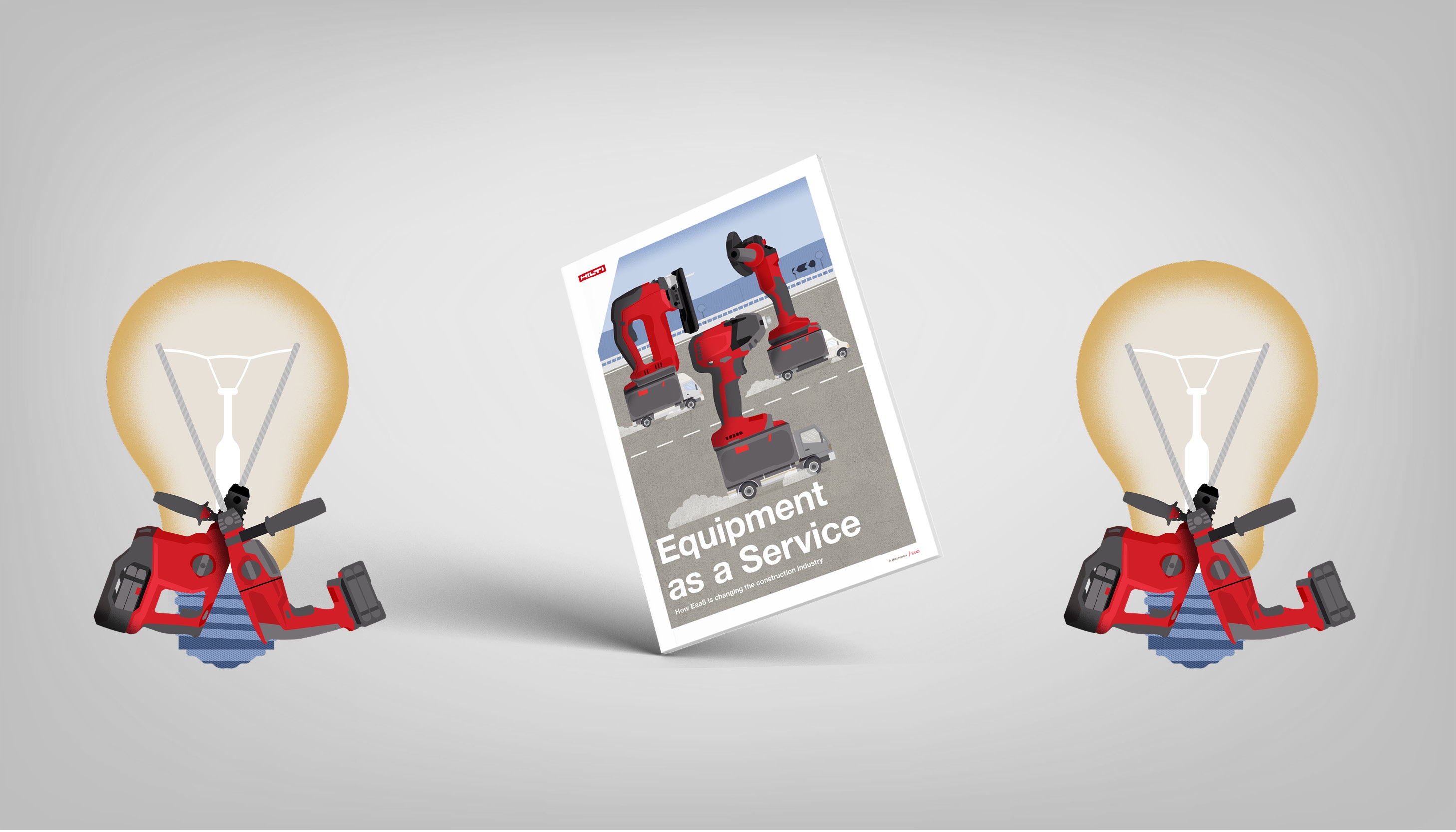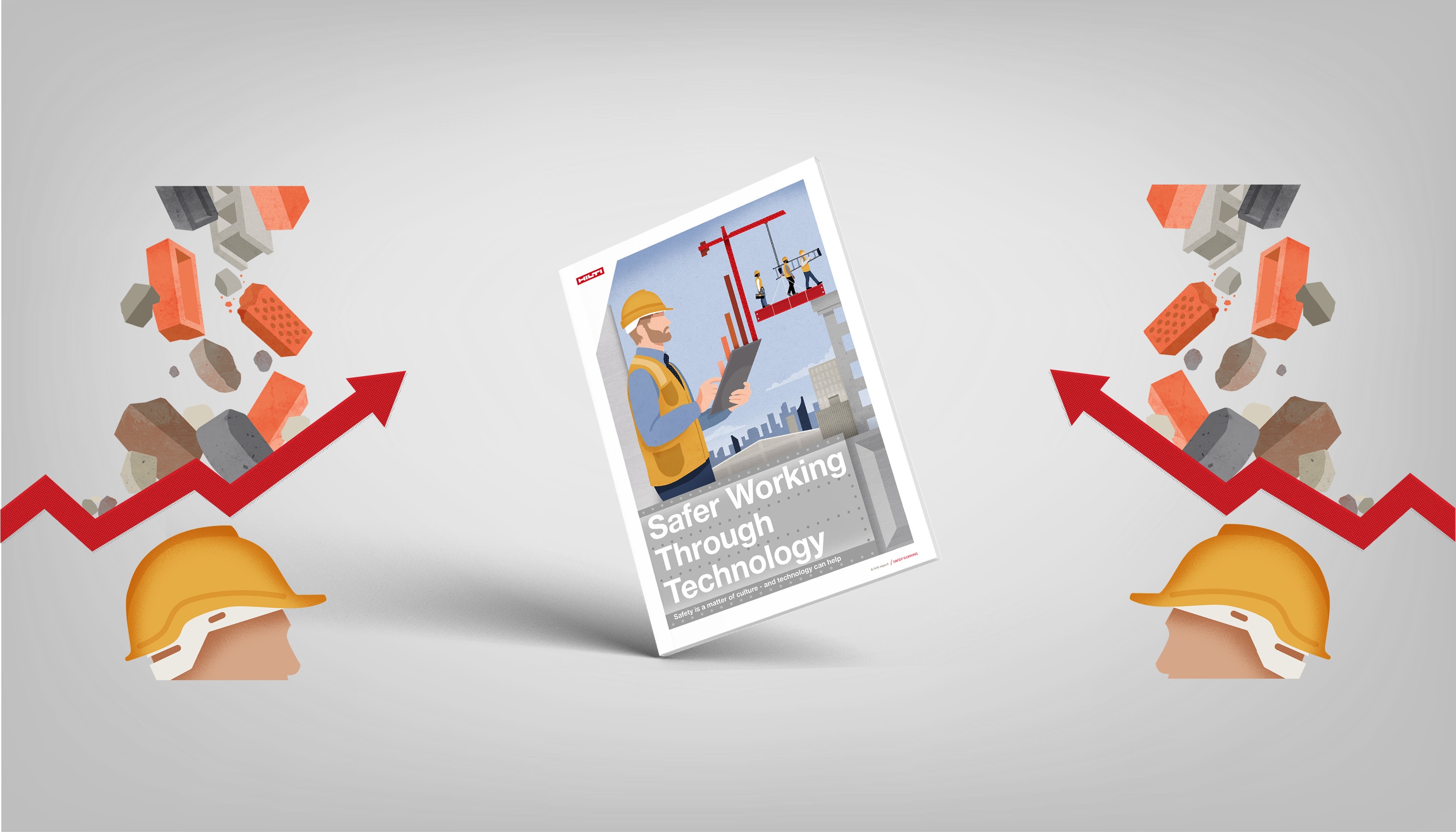What's next in construction
Asking questions to help make construction faster, safer and more sustainable and build a better future

Big Data, Not Bigger BatteriesHow IoT (Internet of Things) and cordless tools are helping to drive productivity into the future
How do you choose a cordless tools platform? By looking beyond battery power and performance stats – focusing also on its IoT and data capabilities.
Connected tools and batteries can capture real-time usage data that can be analyzed to help drive proactive operational decisions, save money, increase productivity, enhance safety and enable compliance.

Equipment as a Service (EaaS)How EaaS is changing the construction industryEquipment as a Service (EaaS) involves accessing equipment on a subscription basis and making periodic payments – rather than owning it and buying it outright.
By utilizing an EaaS model, construction companies can help avoid initial purchase costs, ensuring that the right tools are available for the job and keeping up with the latest technology.

Safer Working Through TechnologySafety is a matter of culture – and technology can helpConstruction doesn't have to be dangerous. There are effective strategies for helping to prevent injuries while helping to reduce costs, increasing productivity and keeping workers happier, more engaged and better employed.
Managers, and especially CEOs, can demonstrate their commitment to safer jobsites by adopting technology that proactively helps to reduce risk.
Rise of the Jobsite Robot: How Automation Can Help Save the Construction Industry
Productivity in the construction industry has barely grown over the past 20 years, and profit margins continue to hover at around 2%, a tenth of what some other industries enjoy.
However, the industry is well positioned to take advantage of construction automation, and construction digitization is already making an impact.
Using construction robotics to dig, drill, cut, weld, move heavy loads and pour concrete can help make jobsites more efficient, more precise and safer.
DownloadWhen We Merge With Machines: Human Augmentation in the Construction Industry
With the global market for human augmentation projected to reach $22.4 billion by the year 2027, there is growing momentum behind human augmentation in the construction industry.
One way the industry is implementing human augmentation is through construction exoskeletons – wearable systems that provide physical assistance to its users through assistive torques and/or structural support, which can help reduce musculoskeletal injuries, improving employee wellbeing and increasing on-site productivity.
DownloadThe Digital Black Hole: Impacting the Construction Industry
The McKinsey Global Institute’s Industry Digitization Index rated construction as the second least digitized sector in the world. With relatively few construction companies digitizing their assets, business processes and working practices, a ‘digital black hole’ has formed in the construction industry.
However, digitizing asset management, including enabling equipment and tool tracking, presents an opportunity to help control costs, reduce losses and keep projects running on time.
DownloadThe Circular Construction Guide: Why and how your company should embrace circularity
Construction is the world’s largest industry, consuming around one-third of all raw materials and generating a similar proportion of waste.
By adopting business strategies that integrate sustainability factors alongside economic ones, you can not only minimize environmental impact, but also help ensure the long-term success of your company. A good place to start is by embracing circular economy principles.
Download